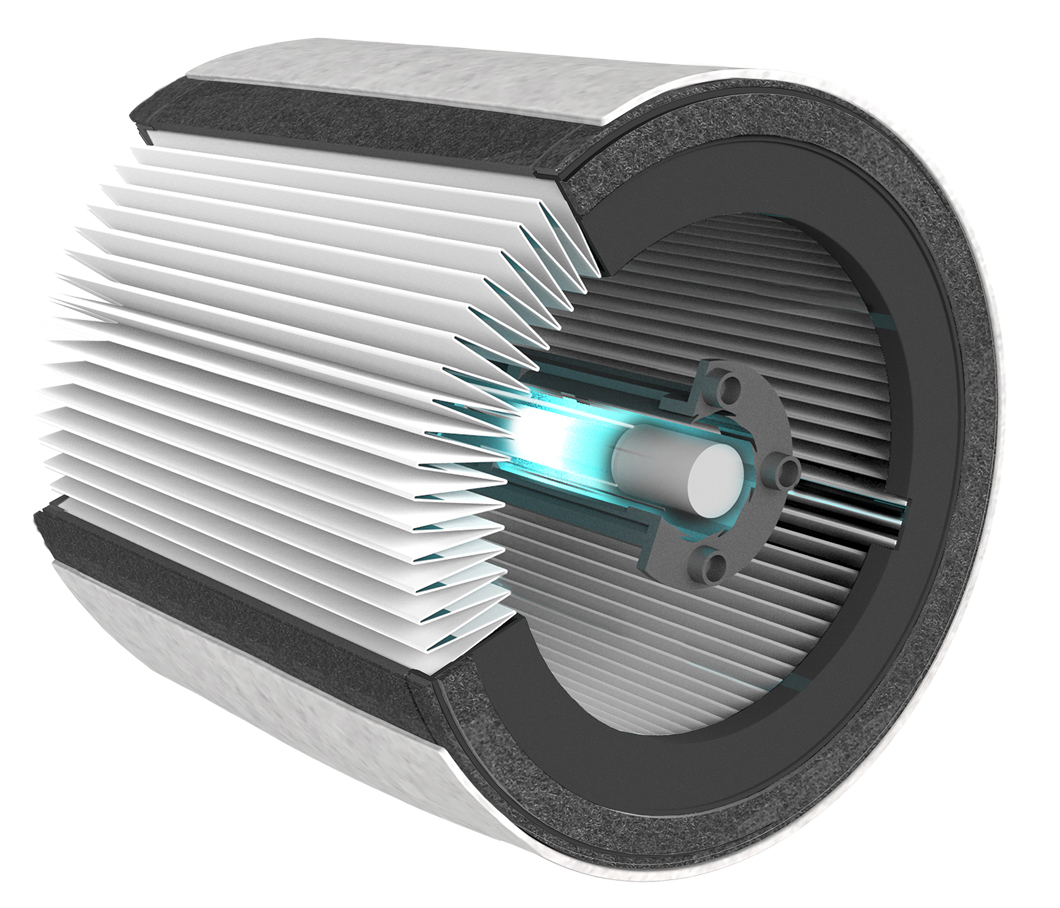
You may have come across the term “HEPA Filter” when looking to purchase an air purifier, HVAC system or vacuum cleaner. Knowing what they are and how they work will give you an understanding of how HEPA filters in products can be beneficial.
What Is A HEPA Filter?
This type of air filter can theoretically remove at least 99.97% of dust, pollen, mold, bacteria, and any airborne particles with a size of 0.3 microns (μm). The diameter specification of 0.3 microns responds to the worst case; the most penetrating particle size (MPPS). Particles that are larger or smaller are trapped with even higher efficiency. Using the worst-case particle size results in the worst-case efficiency rating, for example 99.97% or better for all particle sizes.
What Does HEPA Stand for?
According to the Environmental Protection Agency (EPA), “HEPA is a type of pleated mechanical air filter. It is an acronym for "high efficiency particulate air [filter]" (as officially defined by the U.S. Dept. of Energy).
Where Did HEPA Filters Come From?
Originally, HEPA filters were secretly developed by the military because of their use for chemical, biological, and radiological defense purposes. “Following World War II, the Atomic Energy Commission (AEC) chose the military's HEPA filters as their principal device for particle removal in all exhaust air systems of nuclear facilities.” (Department of Energy, DOE) HEPA filters were first used in the Manhattan Project to prevent the spread of airborne radioactive contaminants and later commercialized in the 1950s.
How Do They Work?
Today, most HEPA filters are made from a mixture of glass fibers that are interlaced. Particles are captured in one of four ways: direct impacting, interception, diffusion, or sieving.
- Direct Impacting: Large particles travel in a straight line, collide, and are trapped.
- Interception: Particles collide with fibers and remain attached to the fibers.
- Diffusion: As smaller particles travel, they collide with the fiber and are captured.
- Sieving: Occurs when the particle is too large to fit in between the fiber’s spaces.
Variations of HEPA Filtration
HEPA Filters can come in many forms with differentiating factors such as grade, class or MERV rating. There are standards set by the Department of Energy (DOE), but HEPA filter type may vary by manufacturer.
HEPA filters are separated into different HEPA grades based on their filtration efficiency of small particulate matter (PM) 2.5 and PM 10 particles. The standard to determine this “…is centered on the performance of the filter for the most difficult, or most penetrating particle size (MPPS).” This classification system “… is based on letters and figures in the same way as for coarse and fine filters according to the EN Classes. The filters are divided into eight classes from H10 to U17, depending on the efficiency of their media at the MPPS (most penetrating particle size) and the size of any weaknesses or leaks introduced by fabrication of the finished item.” (Science Direct)
A Minimum Efficiency Reporting Value (MERV) rating reports a filter’s ability to capture larger particles between 0.3 and 10 µm (microns). The higher the MERV rating, the more particles are captured by the filter.
See the table below for more on particulate matter, MERV ratings, and more. (Department of Energy, DOE)
|
Minimum Efficiency Reporting Value (MERV) Rating |
Particle Size |
Typical Pollutants |
|
17 - 20 |
<0.30 µm> |
Some airborne viruses |
|
13 – 16 |
0.3 – 1.0 µm |
Bacteria, Tobacco smoke, Cooking oil, Most smoke |
|
9 - 12 |
1.0 – 3.0 µm |
Various dusts |
|
5 - 8 |
3.0 – 10.0 µm |
Mold spores |
|
1 - 4 |
> 10.0 µm |
Pollen, Dust mites |
TruSens filters capture particulate matter as small as 0.3 microns.
Where HEPA Filters Are Used
HEPA filters have evolved over time and are used in many industries. Some of the products that you can now find them in are listed below. The type of filter used varies based on the company or manufacturer.
- Air purifiers
- Face masks
- Vacuum cleaners
- Airplanes
- Cars
- HVAC systems
HEPA Filters and Air Purifiers: What to Look For
HEPA filters are the most commonly used form of filtration in an air purifier. When deciding to buy an air purifier and filter for your home, consider additional purification systems as well. Although the HEPA filter is typically the biggest defense against airborne particulates, when it’s paired with additional filtration or sterilization it can improve your air quality even more and extend the life of the HEPA filter. According to the Centers for Disease Control and Prevention (CDC) one or more low-efficiency disposable prefilters, installed outside of a HEPA filter, may extend HEPA filter life sometimes at least 25%.
Conclusion
HEPA filters generally capture particulates such as smoke, dust, bacteria, pollen, and more. These filters help protect us from breathing in potentially harmful pollutants inside our homes and other indoor environments. Although HEPA filters started as a defense to nuclear particles, the shift to commercialization has made it possible for the filters to be used by everyday consumers in a more diverse way.